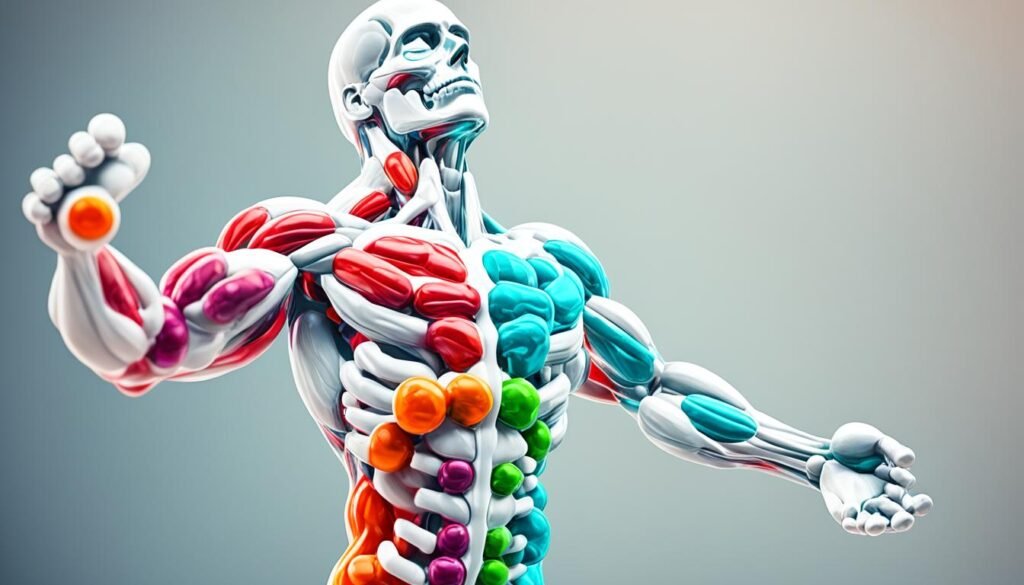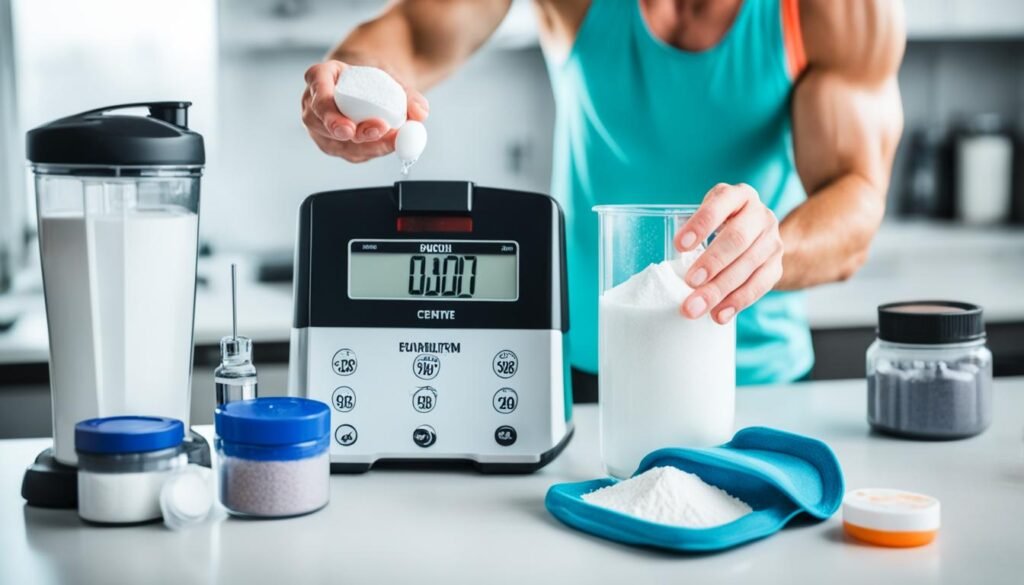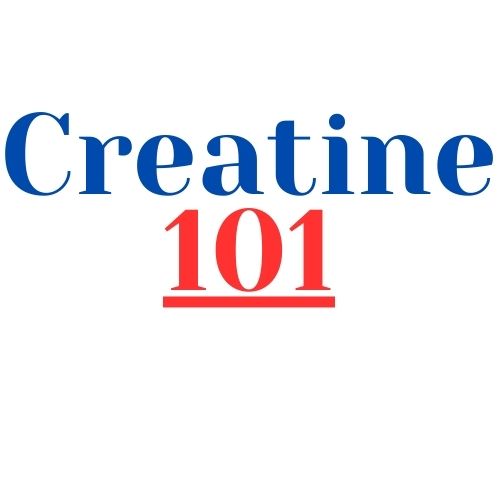Imagine powering up your muscle strength and maximizing your high-intensity training performance with a mere dietary tweak. For those curious about the creatine loading protocol for beginners, here’s an intriguing fact: the typical omnivorous diet only provides a daily intake of 1–2 grams of creatine, undershooting the muscle saturation point by 20-40%. This means that your muscles are likely replenished only to about 60-80% of their potential creatine capacity. By adopting a strategic approach to creatine supplementation, known as creatine loading, you can rapidly fill this deficit and reap the benefits of this potent compound.
So, how to start creatine loading? A beginner’s guide to creatine loading would emphasize that by consuming 20-25 grams daily for about a week, you can supercharge your muscle stores with creatine, a practice that could significantly bolster muscle strength, enhance endurance, and promote muscle gain when paired with an appropriate exercise regimen. Let’s delve into the specifics of this evidence-based technique and learn how to optimize its outcomes.
As someone committed to peak performance and optimal results, educating myself on the proper use of supplements like creatine monohydrate has been paramount. Through first-hand experience and extensive research, I’ve honed the practice of creatine supplementation, alleviating common doubts and maximizing gains both for myself and those I advise. Thus, the journey to empower your muscular potential begins here, with an authentic dive into the what, why, and how of creatine loading.
Key Takeaways
- Commit to understanding the foundational principles of the creatine loading protocol for beginners.
- Learn the profound impact of full muscular saturation with creatine and how a loading phase can achieve this rapidly.
- Embrace the process of transitioning from a high-dosage loading phase to a sustainable maintenance dose.
- Optimize your exercise outcomes with the scientifically backed benefits of creatine, from enhanced performance to muscle growth.
- Navigate the loading phase with knowledge to mitigate potential side effects while amplifying training benefits.
- Stay informed about dosage calculations personalized to your body weight and the importance of correct timing.
- Demystify common misconceptions about creatine use, ensuring confidence in its safety and efficacy.
Understanding the Creatine Loading Process
As I delve into the scientific intricacies of creatine monohydrate loading, it’s imperative to comprehend its pivotal role in augmenting muscle stores and enhancing athletic performance. This process isn’t mere guesswork but is grounded in a deep understanding of biochemistry and exercise physiology. By integrating creatine supplements into a strategic loading regimen, individuals can maximize the ergogenic benefits of this renowned sports supplement.
What Is Creatine and Its Role in Muscle Function?
Creatine, a naturally occurring compound, plays a quintessential role in the rapid energy production required for explosive movements and high-intensity activities. My insights into the role of creatine within our muscles reveal that, by raising the intramuscular concentration, one can noticeably improve strength, power, and overall performance during demanding workouts or athletic competitions.
The Rationale Behind High Doses in the Initial Phase
To expedite the process of maximizing muscle stores, creatine monohydrate loading necessitates higher than usual doses, typically in the realm of 20-25 grams per day. This front-loading strategy is not about excess but rather a calculated approach to quickly saturate the muscles with creatine, allowing my body to reap the performance benefits more swiftly.
Transition from Loading to Maintenance
Post-loading phase, I diligently switch to a maintenance phase with a reduced intake of creatine, around 3-5 grams daily. This step is crucial to maintain the elevated creatine levels achieved during the loading phase, ensuring continued support for my energy systems and thus, sustaining the enhancements in my athletic performance over time.
The Science Behind Creatine Loading Phase for Beginners

As a professional copywriting journalist, I’ve examined the benefits of creatine loading and the compelling body of research on creatine loading. It’s become evident that the creatine loading phase offers swift enhancements to muscle stores. My scrutiny of the literature has revealed that creatine use in sports is indeed justified by substantial scientific support.
One study that particularly stands out demonstrates how creatine loading can lead to full saturation after merely 3 grams per day over a 28-day period. Commonly, the suggested protocol involves a higher intake of 20-25 grams per day for the initial 5-7 days. While the latter approach promotes rapid benefits, the former still achieves maximum creatine stores eventually, with just an additional three weeks required.
The discussions with athletes and coaches have consistently pointed towards significant strength increases, muscle mass gains, and enhanced athletic performance during high-intensity exercises post-creatine loading. These anecdotes work in tandem with research findings to give a comprehensive view of creatine’s efficacy.
Additionally, there’s emerging evidence supporting the premise that creatine may play a role in injury prevention. Numerous athletes have reported experiencing fewer muscle-related injuries while supplementing with creatine, which is an exciting development in sports science. This protective aspect may stem from increased muscle resilience and improved recovery times attributed to optimal creatine stores.
- Accelerated muscle store saturation
- Amplified strength and muscle mass
- Boosted performance in high-intensity exercises
- Potential for reduced injury rates
Given these multifaceted benefits, the incorporation of a creatine loading phase can be considered a strategic component in an athlete’s training regimen. My continued research and engagement with industry professionals will delve even deeper into the intricate dynamics of creatine loading as it pertains to sports science and nutrition.
Benefits of Creatine Loading
The pursuit of peak athletic performance often leads athletes and fitness enthusiasts to explore various supplementation strategies. Among these, creatine loading has emerged as a particularly effective method for enhancing muscle mass and strength. This phase is noted not only for its potential in muscle hypertrophy but also for propounding considerable advances in recovery and overall performance.
Enhanced Muscle Gain
My experience with creatine loading has underscored its reputation as a potent ally in the quest for muscle mass. The distinct recovery benefits of creatine have been instrumental in allowing for greater training volumes—an essential factor in muscle growth. The replenishment of phosphocreatine stores in muscle tissue has translated into noticeable hypertrophic effects, substantiating creatine’s role in promoting muscle gain.
Increased Muscle Strength and Power
Strength and power are foundational to athletic success. Creatine’s ability to regenerate ATP during short bursts of intense activity means my muscles have the energy required to perform better during strength-training sessions. Consequently, the efficacy of creatine for muscle mass isn’t its only benefit; the improvement in maximal strength and power output is equally significant, reflecting a clear uptick in overall performance.
Improved High-Intensity Performance
As someone who frequently engages in high-intensity interval training (HIIT), the swift regeneration of ATP courtesy of creatine supplementation has been critical. This has not only facilitated more robust training sessions but has also reduced the occurrence of fatigue, allowing for sustained effort and enhanced endurance during strenuous workouts.
| Aspect of Performance | Impact of Creatine Loading |
|---|---|
| Muscle Mass | Potential doubling of growth compared to non-users |
| Strength Performance | Increase by 5% to 15% |
| Recovery | Restored glycogen stores, reducing downtime post-exercise |
| High-Intensity Workout Capacity | Improved energy availability for sustained high-level performance |
These observations have reinforced the narrative around creatine’s profound influence on athletic performance. Through meticulous training and disciplined supplementation, creatine has not just been an additive to my regimen, but a transformative catalyst for achieving and surpassing my fitness goals.

When incorporating a creatine loading protocol into my fitness routine, I was well-informed about the potential for side effects. Awareness of the side effects of creatine is crucial for anyone considering its use. Personal experience and widespread reports have aligned on certain adverse effects, most notably gastrointestinal issues with creatine. While some individuals may never experience discomfort, others might find themselves coping with nausea or diarrhea.
Throughout my journey, I encountered temporary weight gain, a side effect typically attributed to water retention within muscle cells. This increase in body water is a predictable response as creatine pulls fluid into the muscles, aiding in their function and growth. However, it’s essential to differentiate between this harmless side effect and any underlying health concerns that may be exacerbated by creatine usage, especially for those with preexisting kidney conditions.
To illustrate the incidence of these side effects and to provide a clear, understandable breakdown, I’ve compiled observations into a table. This table showcases commonly reported creatine loading side effects, the possible reasons behind them, and the frequency of occurrence as noted in various studies and anecdotal evidence.
| Side Effect | Potential Cause | Frequency |
|---|---|---|
| Gastrointestinal discomfort | High creatine dosages | Occasional |
| Weight Gain | Water retention in muscles | Common |
| Nausea and Vomiting | Sensitivity to creatine or dosing on an empty stomach | Rare |
| Diarrhea | Body’s adjustment to increased creatine levels | Occasional |
Fortunately, these side effects are not a universal experience and can often be mitigated with adjustments to the creatine regimen. Splitting doses, consuming creatine with meals, and ensuring adequate hydration are practical strategies I’ve utilized to minimize discomfort. It’s reassuring to know that recent research has debunked some former concerns, such as creatine’s link to dehydration, reinforcing its safety profile when used correctly.
Recommended Creatine Loading Dosage
When it comes to enhancing athletic performance and muscle strength, the recommended creatine loading dosage plays a critical role. As I deepen my understanding of these dosing strategies for creatine, it is clear that an optimal creatine loading approach tailored to individual needs can spell the difference between good results and great achievements.
Dosage Calculations Based on Body Weight
Initiating a creatine loading phase means adjusting the dosage to your body weight to achieve rapid saturation of muscle creatine stores. A general guideline is a daily intake of 20-25 grams over the course of 5-7 days. This can be calculated precisely by factoring in your body mass. Now, let’s look at how this specifically translates to individual dosages:
| Body Weight (kg) | Creatine Dosage (grams) |
|---|---|
| 60 | 18 |
| 70 | 21 |
| 80 | 24 |
| 90 | 27 |
Duration and Timing of Creatine Intake
With the amount per day decided based on body weight, the focus shifts to the proper breakdown throughout the day. The optimal creatine loading strategy advocates for dividing the daily dosage into four to five equal parts, ensuring consistent plasma levels and efficient muscle absorption. Following the loading phase, a maintenance dose of 3-5 grams daily is necessary for sustaining elevated creatine levels and reaping lasting benefits.
In my regimen, I’ve found that timing the dosing for creatine intake closely with my workout routine bolsters recovery and promotes muscle engagement. Once my muscles are sufficiently saturated, I keenly observe my body’s response, adjusting my intake to maintain those high creatine levels crucial for pushing the boundaries of my athletic performance.
Debunking Creatine Myths: Safety and Efficacy

When it comes to sports nutrition, the International Society of Sports Nutrition is a touchstone for evidence-based recommendations. It’s with their studies in mind that I approach the topic of creatine safety and the efficacy of creatine supplements. As someone deeply invested in understanding and relaying the truths about fitness supplements, I’m here to dispel the myths and offer a clear-eyed view of creatine’s role in our workout regimens.
For years, creatine has been framed by misconceptions, tagged as dangerous or of dubious benefit. However, the tide of research, including extensive studies endorsed by the International Society of Sports Nutrition, confirms both its efficacy and safety. Considering that creatine is naturally present in the body and essential for energy production in muscle cells, it’s no wonder that the scientific community has found it to be a beneficial ally in the quest for improved athletic performance.
According to the International Society of Sports Nutrition, we can consume up to 30 grams per day for five years without significant adverse effects.
Such a statement isn’t just comforting; it’s grounded in a history of research that underscores the critical role of creatine in enhancing muscle strength, increasing muscle mass, and even in some cases, aiding in recovery post-exercise. In fact, these findings have completely altered the narrative around the supplement, putting to rest concerns about dehydration and muscle cramping.
In closing, I hold the position—as does the breadth of scientific literature on the matter—that creatine is not only safe when used responsibly, but it’s also a highly effective tool for our muscle-building arsenals. As such, I firmly stand by the notion that when used conscientiously, creatine supplements can be a powerhouse addition to the diet of those looking to get the most out of their workout routines.
Step-by-Step Guide to Creatine Loading

If you’re looking to start creatine loading, it’s vital to follow a precise schedule and accurate dosing to maximize your results. Here’s a practical, step-by-step guide to creatine loading that will quickly boost your muscle creatine stores. As someone who firmly believes in the efficacy of well-informed supplementation strategies, I assure you that following these guidelines can help enhance your athletic performance.
Measuring Your Doses
Firstly, it’s critical to measure your daily creatine intake accurately to ensure you’re consuming the optimal amount. During the loading phase, which typically lasts for 5 to 7 days, the goal is to consume between 20-25 grams of creatine each day. This quantity should be divided into smaller doses to be taken throughout the day, and it helps to use a digital kitchen scale for precise measurements.
Scheduling Your Creatine Intake
When devising a creatine loading protocol, timing is everything. For simplicity and effectiveness, divide your total daily intake into four to five equal parts. Distributing doses evenly across the day can prevent digestive discomfort and promote better absorption. Here’s an example schedule for someone weighing in at 80 kg:
| Time of Day | Creatine Dose |
|---|---|
| Morning | 5g |
| Mid-Morning | 5g |
| Afternoon | 5g |
| Evening | 5g |
| Before Bed | 5g |
Following this step-by-step guide to creatine loading, you can start increasing your muscle strength and endurance. Remember that after the loading phase, you should switch to a maintenance dosage of 3-5 grams daily to keep your creatine levels optimal. Track your progress and adjust your intake as needed, always listening to your body’s responses to supplementation.
Duration of Creatine Loading: How Long Before Results?
Embarking on a creatine loading regimen prompts the question of timing—specifically, the duration of creatine loading and when one can expect tangible outcomes. My experience aligns with broader consensus that a typical loading phase spans 5-7 days. This timeframe is not arbitrarily set; it is formulated to drive a swift uptick in muscle creatine stores, a pivotal factor in muscle function and growth. It’s at the end of this period that the first results from creatine loading often emerge, heralding the onset of performance enhancements. These early signs can be as immediate as an uptick in endurance during workouts or a noticeable increment in muscle definition.
As one diligently follows the creatine loading protocol, the body responds by maximizing muscle saturation. This initial boost is what many of us strive for—maximizing creatine benefits to see a rapid shift in our athletic abilities. I’ve observed a discernible increase in power and muscular strength in my training sessions, and many others report similar experiences. Lean body mass gains are another desirable result that may start materializing swiftly, provided that the protocol is paired with a consistent workout regimen.
Yet, the journey doesn’t end with the loading phase. Optimal results are tied to persistent effort and adherence to daily maintenance dosing, a post-loading phase that cannot be overlooked if long-term gains are the objective. It is this meticulous follow-through that sustains and amplifies the benefits derived from that initial week of loading. It’s a process that demands patience and discipline, but the payoffs in muscular endurance, strength, and physique are well worth it.
FAQ
What is creatine and how does it function in muscles?
Creatine is a naturally occurring compound in the body and certain foods, primarily stored in muscles, where it plays a key role in producing energy for quick, intense bursts of activity. It allows for the rapid replenishment of ATP, the energy currency of cells, particularly during high-intensity exercises.
Why are high doses recommended during the initial phase of creatine loading?
High doses of creatine during the initial loading phase are meant to saturate the muscles with creatine swiftly, to amplify the compound’s benefits sooner. A standard dose is typically 20-25 grams per day, divided into several servings to rapidly boost muscle creatine levels by 10%-40%.
How do I transition from the creatine loading phase to maintenance?
After completing the initial 5-7 day loading phase of consuming 20-25 grams of creatine daily, you transition to a maintenance phase by reducing the intake to a daily dose of 3-5 grams. This helps sustain the elevated levels of creatine in your muscles over time.
What are the scientifically proven benefits of creatine loading?
Research indicates that creatine loading can lead to significant muscle mass gains, improved strength, and better performance during high-intensity workouts. Additionally, it may help with quicker recovery by replenishing muscle glycogen stores, essential for resistance training.
Can everyone experience muscle gain from creatine loading?
Yes, most people can experience an increase in muscle mass from creatine loading, particularly when combined with resistance training. This is attributed to creatine’s ability to increase protein synthesis and enhance workout performance, potentially doubling the gains in muscle mass compared to non-users.
The side effects of creatine loading may include gastrointestinal discomfort, such as nausea and diarrhea, and temporary weight gain from water retention. To minimize side effects, ensure you drink plenty of water and consider dividing the creatine dose throughout the day.
How do I calculate the right dosage of creatine based on my body weight?
To calculate your creatine loading dosage, multiply your body weight in kilograms by 0.3. For instance, if you weigh 80 kg, you would aim for about 24 grams of creatine per day during the loading phase, divided over several servings.
What is the best timing for creatine intake during the loading phase?
For optimal results during the creatine loading phase, divide your total daily dose into four or five servings evenly spaced throughout the day. Once you transition to maintenance, you can take your daily dose of 3-5 grams at any time, though some prefer to time it around their workouts.
Is creatine safe for long-term use, and is it effective?
Yes, creatine is considered safe and effective for long-term use. The International Society of Sports Nutrition deems it a well-tolerated supplement when used within recommended guidelines, and scientific studies indicate it can be consumed up to 30 grams per day for as long as five years without adverse effects.
What is the step-by-step guide for beginners starting creatine loading?
To begin creatine loading, divide a total daily dose of 20-25 grams into four or five servings, and consume evenly throughout the day for 5-7 days. Measure each dose accurately to ensure the proper intake. After the loading phase, continue with a maintenance dose of 3-5 grams daily.
How long does the creatine loading phase last, and when will I see results?
The duration of the creatine loading phase is generally 5-7 days. You may start noticing improved strength, increased power output, and potential muscle gain within a week of beginning the protocol. Continuing with a maintenance dose is necessary to sustain these benefits over time.




